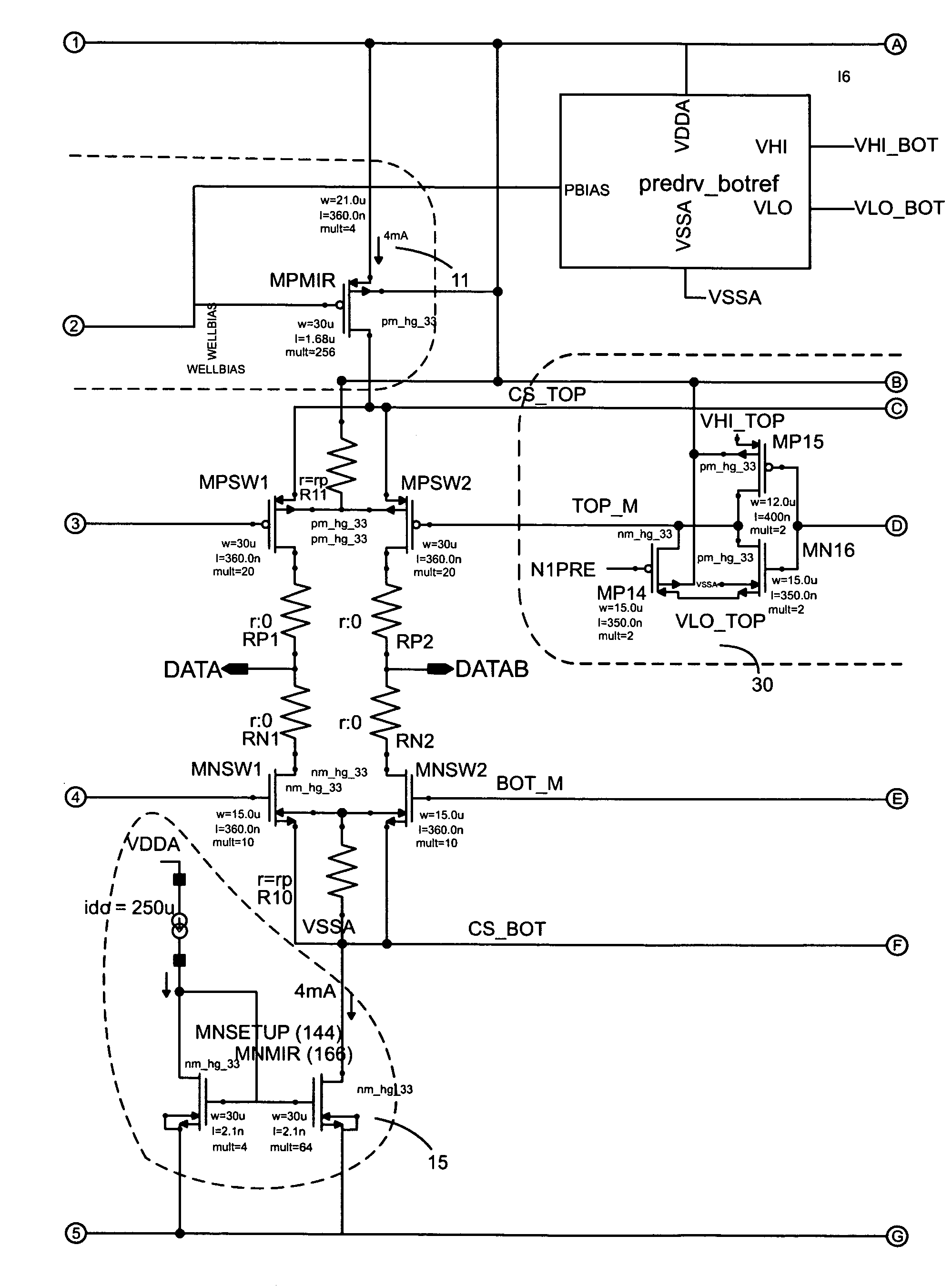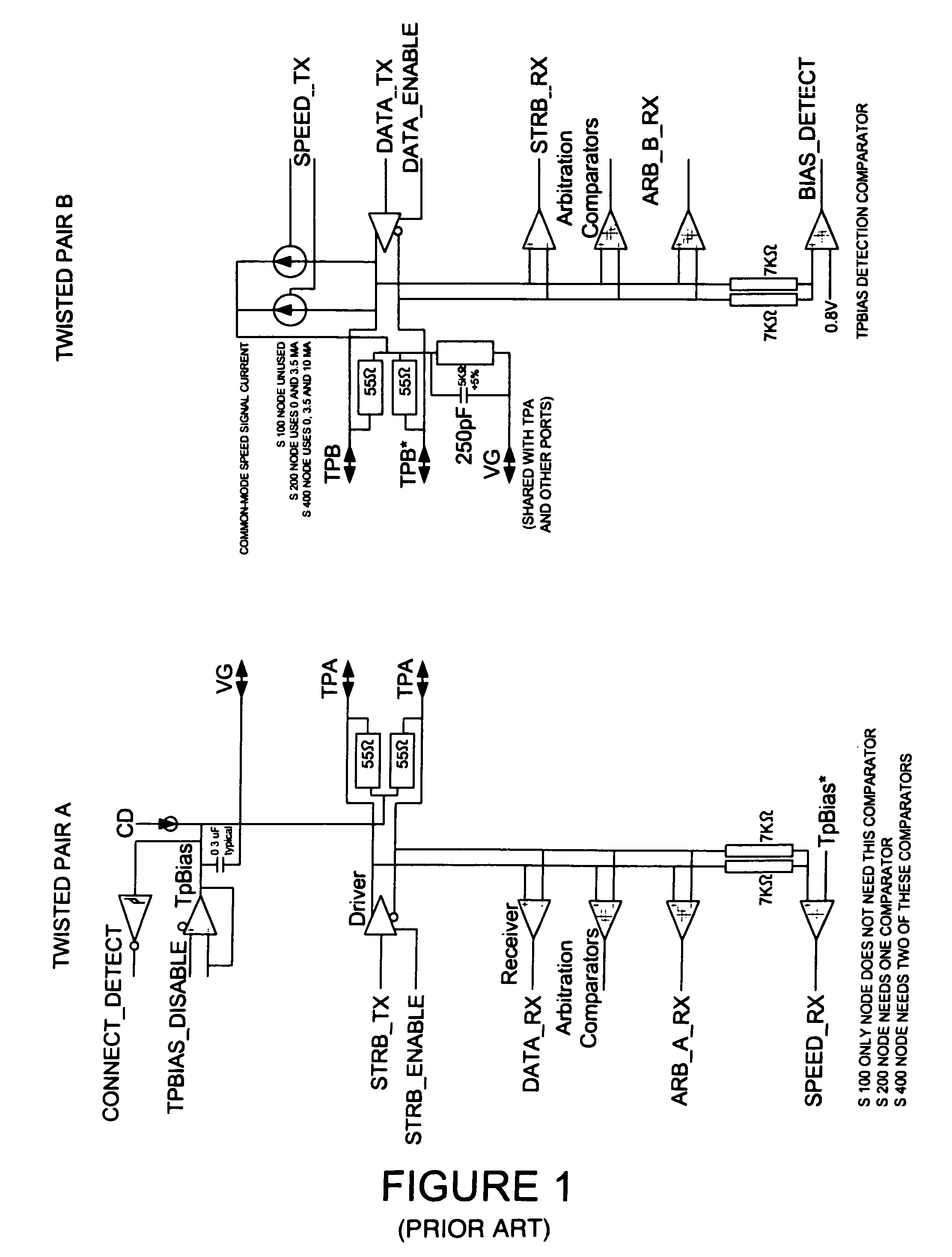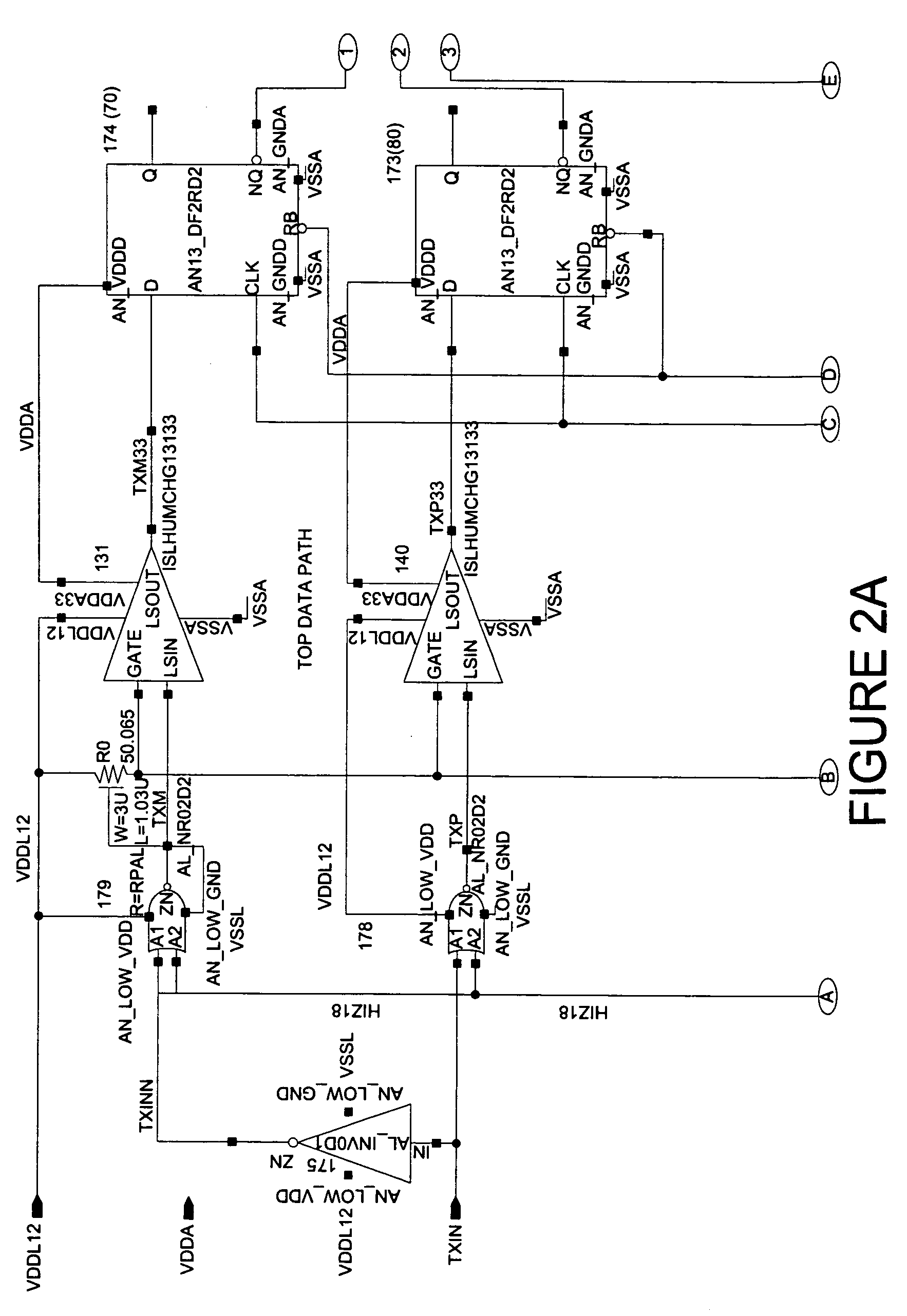Differential current-mode driver with high common-mode range and controlled edge rates
a current-mode driver and differential current-mode technology, applied in the field of serial bus drivers, can solve the problems of serial bus driver designers and faster circuits with lower power consumption over a wide range of frequencies transmitted, and achieve the effect of low timing skew and well-controlled
- Summary
- Abstract
- Description
- Claims
- Application Information
AI Technical Summary
Benefits of technology
Problems solved by technology
Method used
Image
Examples
Embodiment Construction
[0038]Turning attention to FIG. 1 (prior art), from FIG. 4-12 of the IEEE-394 specification, IEEE Std. 1394a-2000, there is shown a single cable port consisting of two differential twisted-pair line transceivers (TPA / TPA* and TPB / TPB*). When two ports are connected via an interface cable, TPA of port 1 connects to TPB of port 2 and vice versa. Twisted pair A transmits the Strobe signal. Strobe transitions whenever data does not, such that the XOR with data produces a periodic waveform. Twisted pair A receives Data (e.g. data to be transmitted) while twisted pair B transmits Data and receives Strobe. Each twisted-pair transceiver consists of a + / −4 ma differential current driver, a data receiver (comparator), and two arbitration comparators. TPA also utilizes two additional comparators for receiving the common-mode speed signal. Twisted-pair A also transmits TpBias (Twisted-Pair common-mode Bias voltage), which sets the common-mode DC bias (DC level around which the AC differential s...
PUM
 Login to View More
Login to View More Abstract
Description
Claims
Application Information
 Login to View More
Login to View More - R&D
- Intellectual Property
- Life Sciences
- Materials
- Tech Scout
- Unparalleled Data Quality
- Higher Quality Content
- 60% Fewer Hallucinations
Browse by: Latest US Patents, China's latest patents, Technical Efficacy Thesaurus, Application Domain, Technology Topic, Popular Technical Reports.
© 2025 PatSnap. All rights reserved.Legal|Privacy policy|Modern Slavery Act Transparency Statement|Sitemap|About US| Contact US: help@patsnap.com



